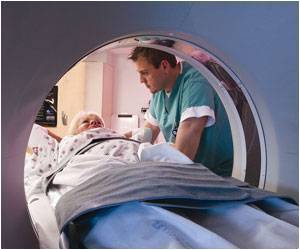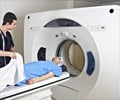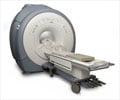A technique widely used in medicine to create images of internal organs such as the heart, the lungs, the liver and even the brain is Magnetic resonance imaging (MRI).

MRI works by manipulating the alignment of the body's hydrogen atoms, which are susceptible to magnetic fields. Normally, our body's atoms spin around randomly, without any observable direction. During an MRI scan, a powerful magnet is used to generate a magnetic field that can be up to 40,000 times stronger than the Earth's. This causes approximately half the atoms to align towards the patient's head and the other half towards the feet.
The opposing alignment of the body's atoms cancels out much of the background 'noise', since for every atom lined up one way there is one lined up the opposite way. However, a few atoms per million (still a huge amount in total) line up in either direction without a cancelling counterpart. By reading out the energy levels of these atoms, the MRI computer can generate detailed images of the body, which can be central in diagnosing disease.
A well-known weakness of MRI is low sensitivity. This can be addressed with the use of hyperpolarization techniques, which involve injecting patients with substrates that contain a stable carbon isotope that is almost perfectly aligned with the machine's magnetic field. However, the preparation of these contrast agents requires the use of highly reactive chemicals called persistent radicals, which can be potentially toxic. Consequently, they have to also be filtered out prior to injecting the substrates and require additional pharmacological tests, all of which considerably reduce the MRI contrast, while posing a risk to the patient.
Researchers replace toxic chemicals with a natural substance
A research team led by Arnaud Comment developed a breakthrough solution to this problem. They found that high resolution in contrast-enhanced MRI can still be achieved with pyruvic acid, an organic chemical that occurs naturally in the body as a result of glucose breakdown, without the need of persistent radicals.
Advertisement
The new hyperpolarization method opens a way to perform MRI with compounds that are not toxic, thus reducing or altogether eliminating associated health risks. In addition, because it does not require filtering or additional tests, the method will cut down on the time and cost of contrast-enhanced MRI protocols, thus improving the quality of the scans and diagnosis. The authors believe that the technique will be rapidly incorporated into the clinical setting and call it "a substantial step forward toward clinical radiology free of side effects".
Advertisement












